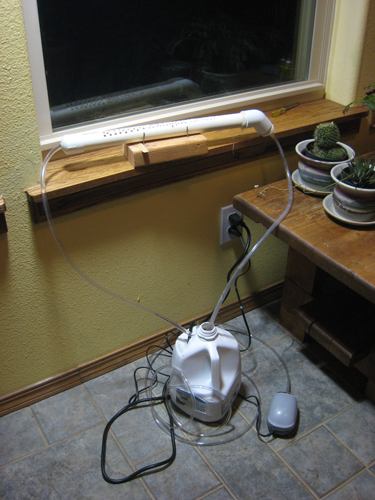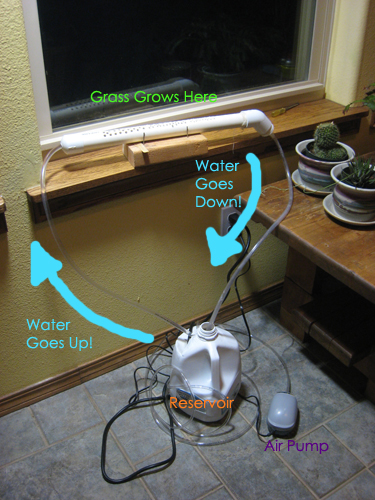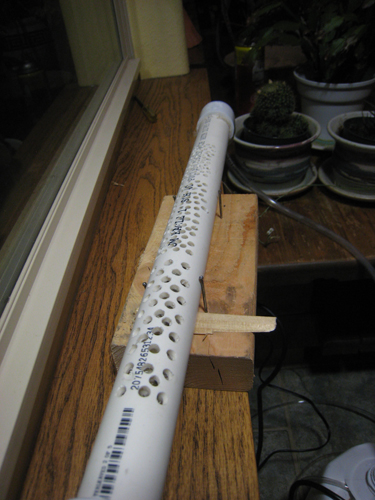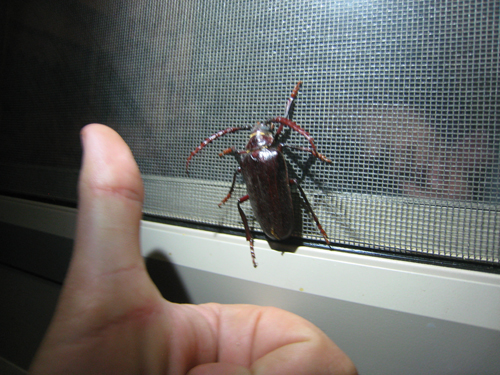I can’t remember exactly how, but over the past week I have become completely obsessed with hydroponics. Hydroponics is a method of growing plants that does not use any soil. The idea is that soil acts as a vessel for water and nutrients. The soil is not essential for the plants to grow; only the water and nutrients that it delivers. For more information on Hydroponics, check out the wiki. Bonus: “The earliest published work on growing terrestrial plants without soil was the 1627 book, Sylva Sylvarum by Sir Francis Bacon, printed a year after his death. Water culture became a popular research technique after that.” (Wikipedia)
Anyway, after doing countless hours of research, I figured out everything I needed to start a small hydroponic station, and went to the local hydroponic store. You would be surprised how many hydroponic stores there are. I guess people really like growing plants in their basements and closets.
The growing technique I opted to try is called the Nutrient Film Technique. Hardcore hydroponicists argue that it is the only ‘true’ method of hydroponics because the plants require little to none growing medium. Other techniques require the plant to be suspended in some sort of medium, popular choices being clay balls, coir (fibers from the outer shell of a coconut), vermiculite, perlite, and other non-soil mediums. In NFT hydroponics, the only medium that is required is to sprout whatever seed you are growing. You then put it in a net pot, and let the water do the rest. The NFT technique incorporates a steadily flowing shallow stream of nutrients and water for the roots thrive in.
Here is my experiment:

The milk jug acts as a reservoir for the water and nutrients. Inside the jug is an air stone that delivers oxygen to the water, and a small water pump. The only water loss in an efficient hydroponic setup is through evaporation (and what your plants drink). The rest is continuously recycled, though, it is recommended to change your water and nutrients about once a week depending on what type of plants are growing.

Water flows up the left side, trickles through the tube, and comes back down into the reservoir. Normally all the tubes for water flow are black. Anywhere the water is exposed to light is prone to algae growth. But I’ve got ideas for that algae growth.
So what am I growing? What else. Grass! At first I was trying to devise a way to grow the grass in small pots, but after seeing this system, I figured that the pots might not be necessary. Instead, I drilled a series of holes in a length of 1″ diameter PVC.

The grass seed is lying in the bottom of the pipe, hopefully germinating. I currently have the incoming water at a two gallon-per-hour trickle so that it keeps the seeds moist but doesn’t wash them down the pipe (there is piece of cheese cloth at the end of the pipe to prevent seeds from getting into the reservoir). Once the seeds have germinated and a thick root mat has formed, I will increase the flow of water as needed. There are three different hole sizes drilled in the pipe. The idea is that the grass will grow toward the light, and out of the holes. Once I’ve got the kinks figured out, look for these elements in some upcoming sculptures!
Lastly, living out in the woods is rad.

